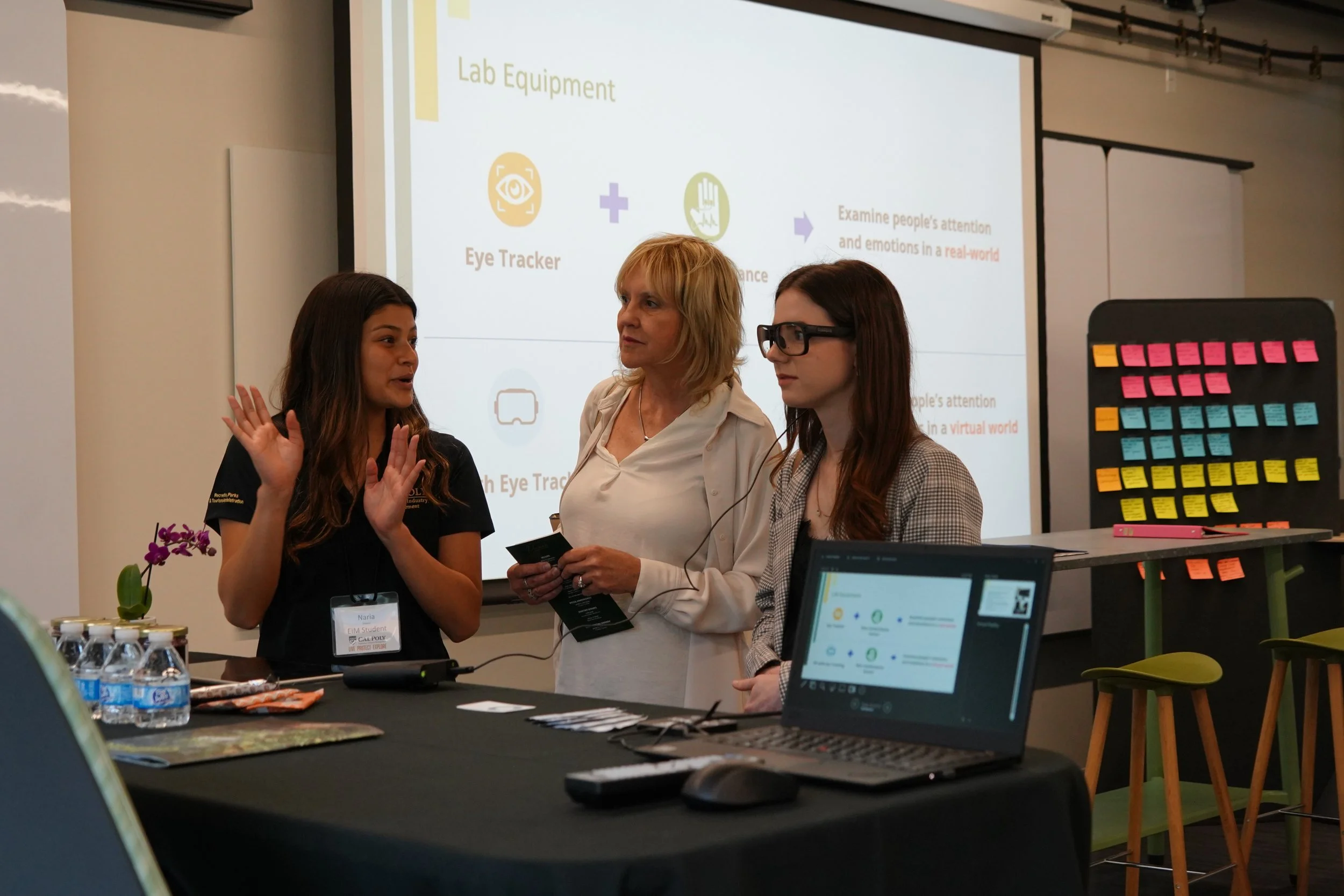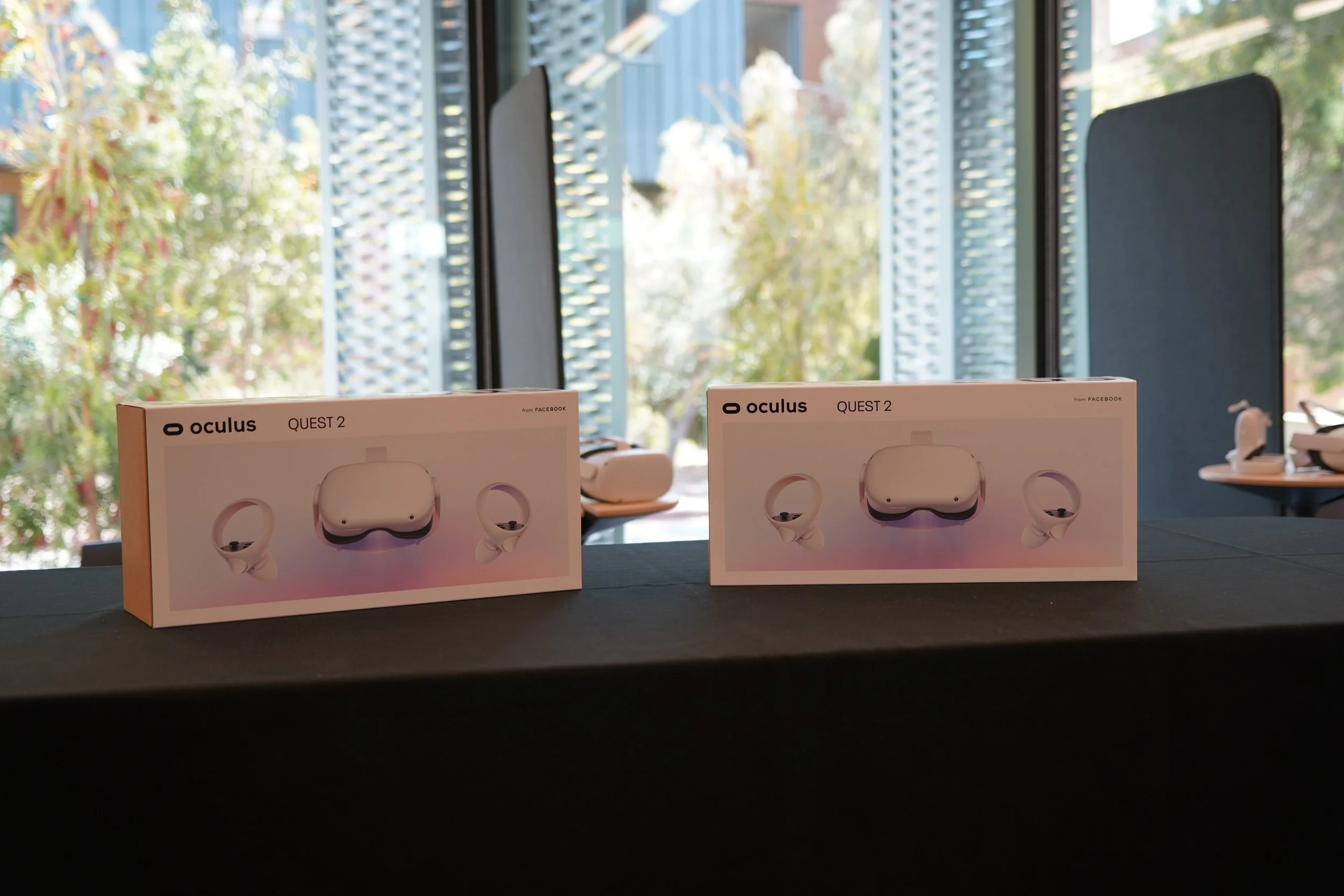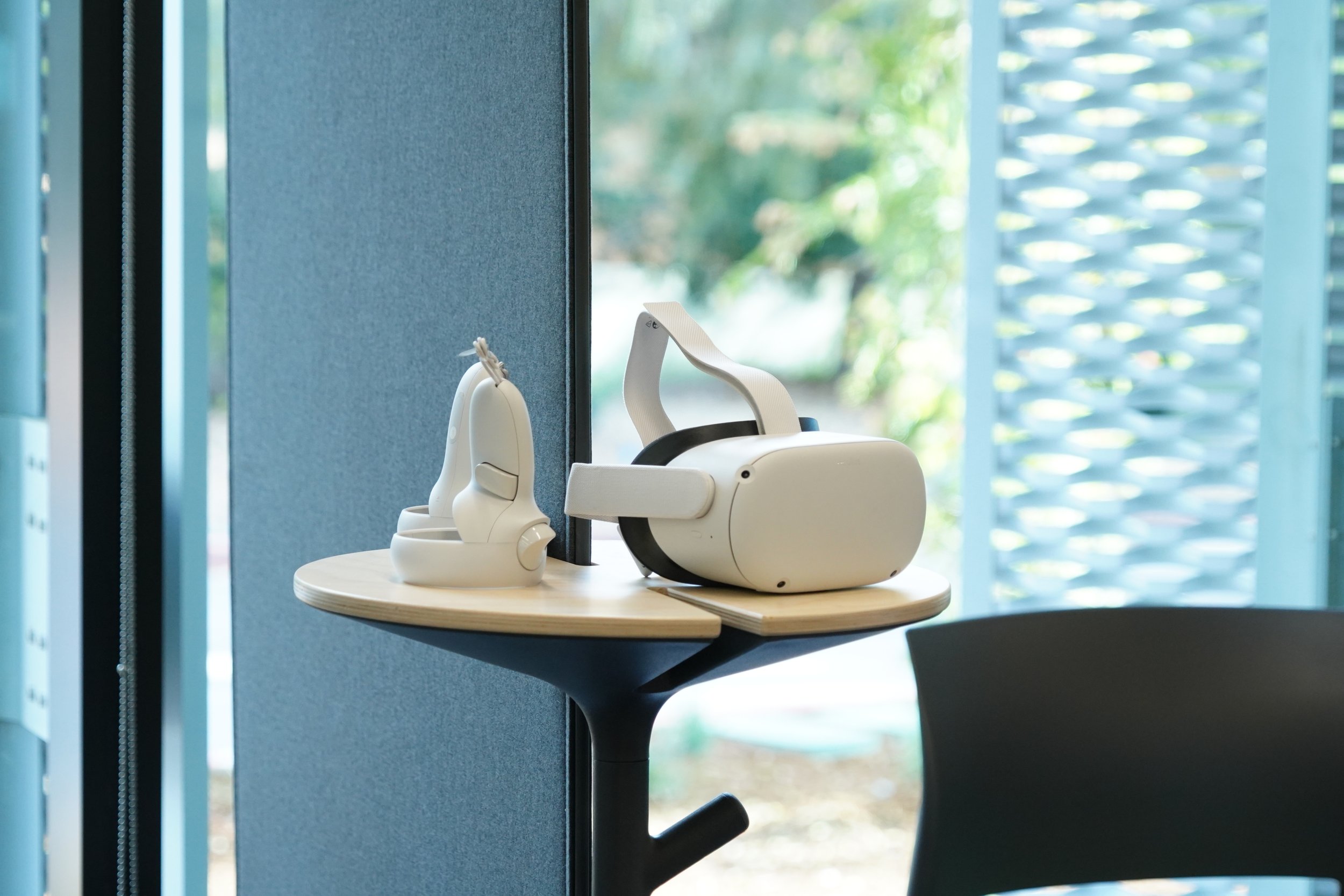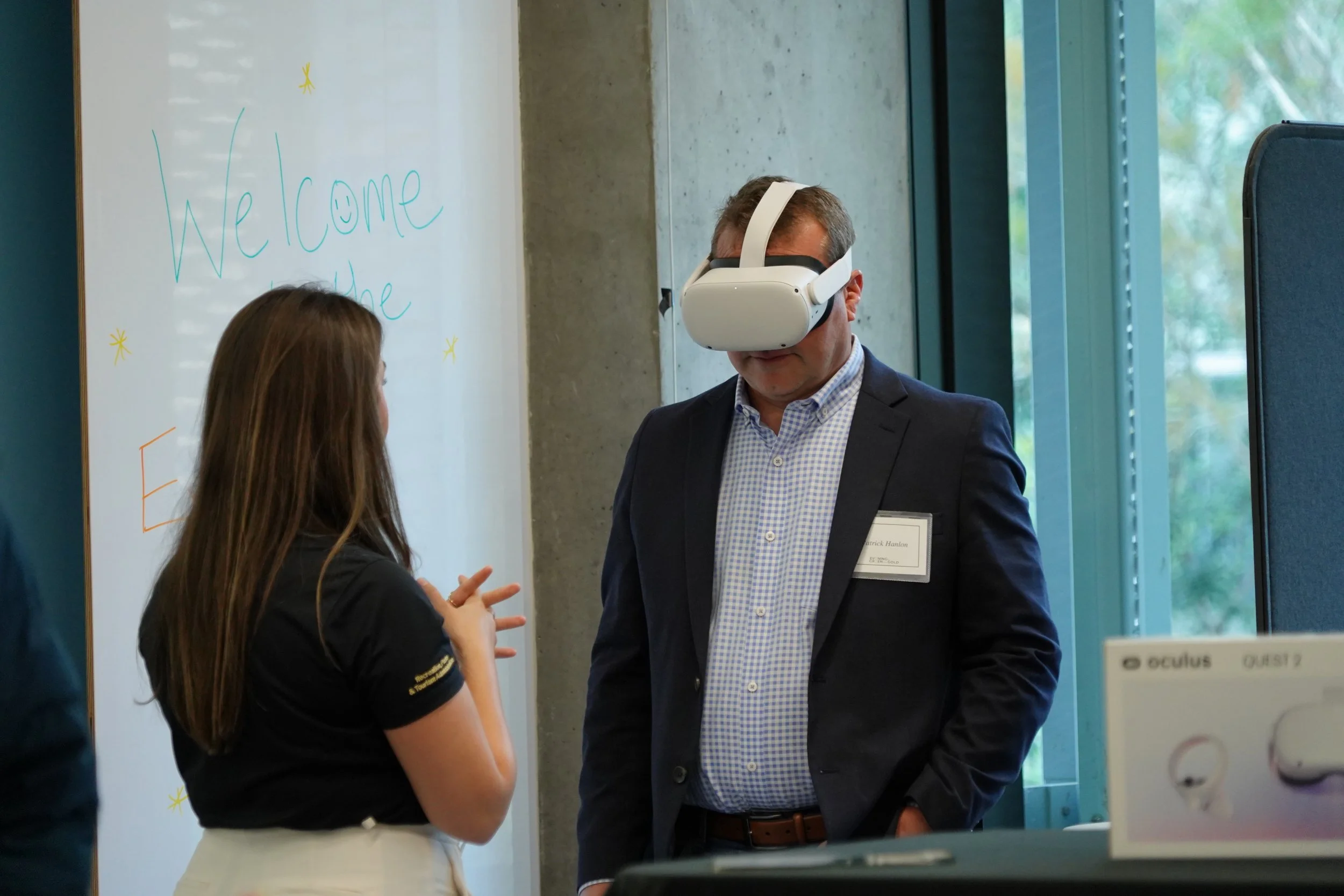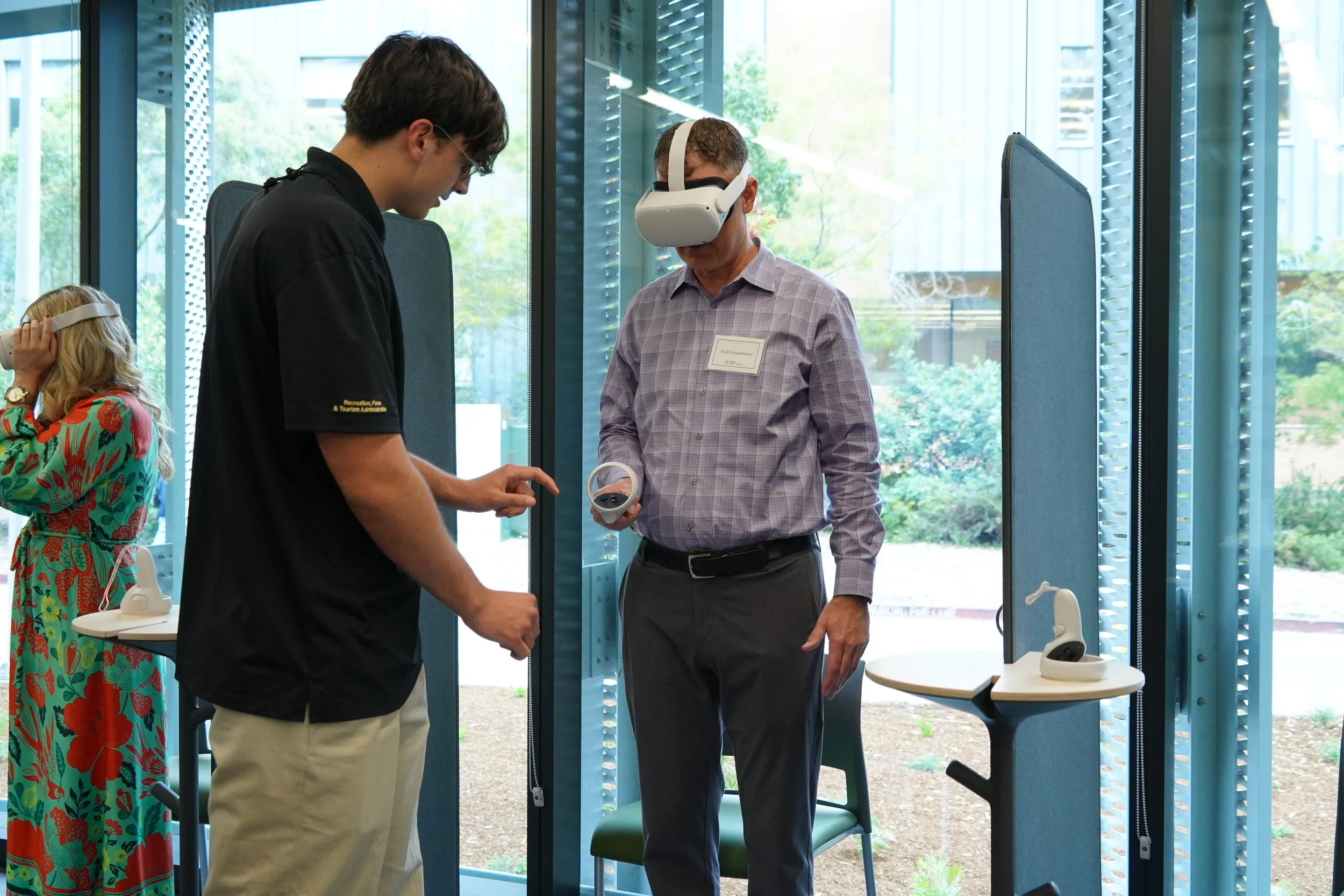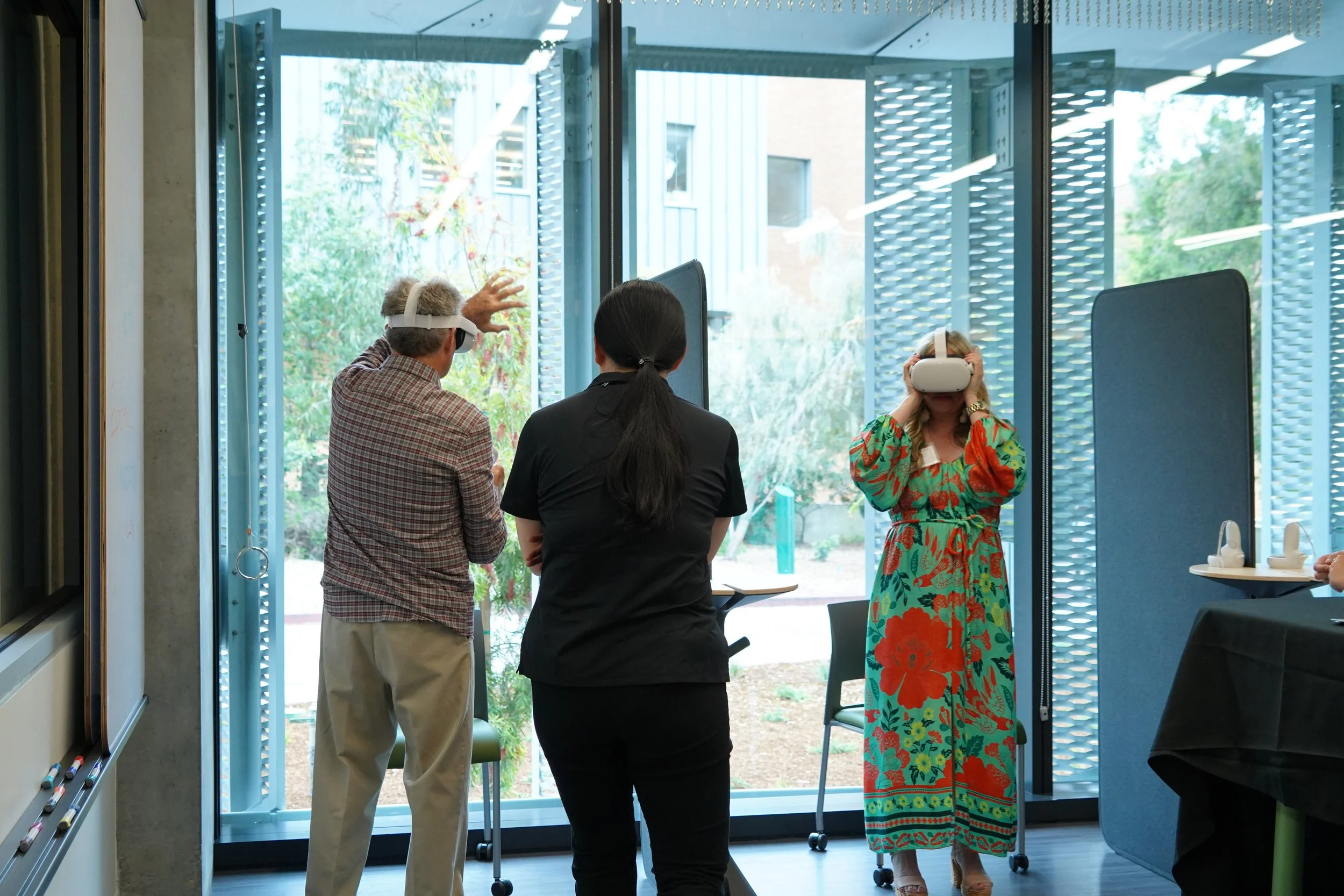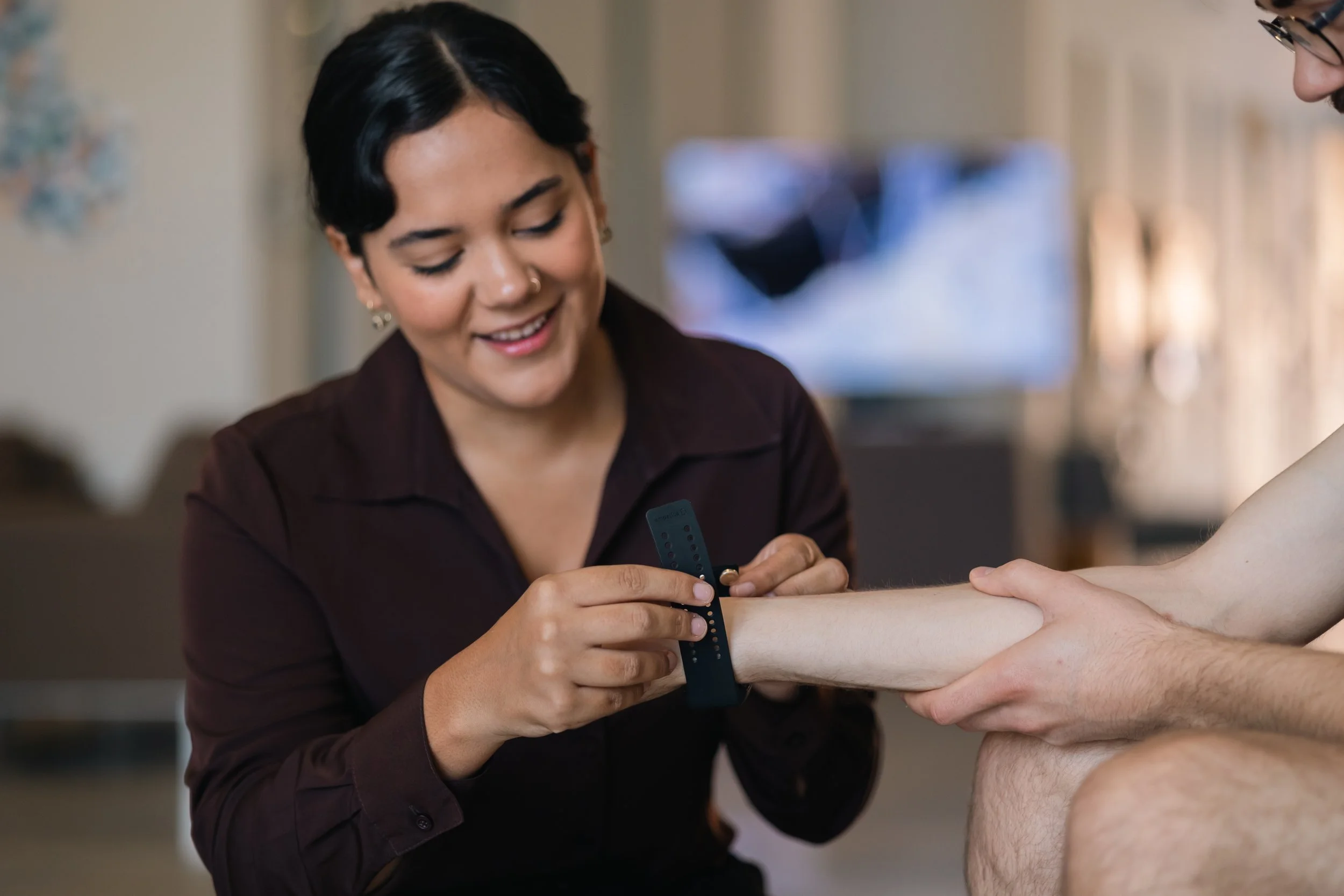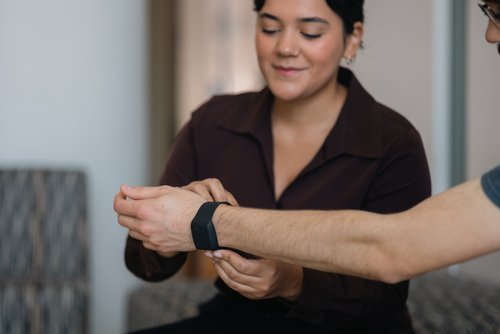Overview of Our Space
Creative cloud suites
Telepresence system & video conferencing
Multiple monitors, cameras, webcams, streaming services
Ideation spaces
Mobile & voice-activated technology
State-of-the-art modular collaboration systems
Technology Used in Our Space
Virtual Reality: 25 Oculus VR Headsets
Skin Conductance Sensor: 6 Empatica E4 Wristband
Eye Tracker: 2 units of Tobii Pro Glasses 3
Virtual Reality + Eye Tracker: 2 units of VIVE Pro Eye
Microsoft Surface Hub 2S Touchscreen
Lab Desktop
What we will have
EEG Headset
Augmented Reality Headset
Tobii Pro Glasses 3
Tobii Pro Glasses 3
Tobii Pro Glasses 3 captures, investigates, and understands how others interact with the world around them. Scientific research can be conducted beyond controlled environments and in real-world settings, allowing participants to show their natural behavior. Researchers can find more concrete evidence from observing human visual behavior and interactions. The glasses capture a thorough first-person viewpoint, enabling researchers to step back and observe in real-time high-quality data. Using sixteen illuminators and four eye cameras integrated into scratch-resistant lenses, researchers can find business insights by examining people's attention to the stimuli. The glasses contain built-in microphones that capture environmental sounds for more contextual data. Tobii Pro Glasses 3 can provide a more in-depth understanding of the experience industry and help businesses enhance their offerings and marketing strategies, leading to improved customer satisfaction and business growth.
Vive Pro Eye
Vive Pro Eye
The VIVE Pro Eye is a precision eye-tracking device for virtual environments that helps understand human visual behavior. The headsets track and interpret eye movements to enable lifelike interactions through VR. The VIVE Pro Eye features room-scale tracking that goes up to 100m, professional-grade sound, and graphics to put users right into the event. The device observes eye movements and blinks to study non-verbal engagement in conferences, chat groups, and remote collaboration within the realm of extended reality. This device can be used for mock trials of an event, put students into the lobby of a hotel for a guest experience, or do a walk-through of a stadium. The VIVE Pro Eye helps improve the experience industry by enhancing the quality and interactivity of experiences, offering data-driven insights, and improving the design of virtual content.
Virtual Reality Headset
Virtual Reality Headset
The Oculus Virtual Reality headsets allow individuals to discover new adventures in games, shows, and other experiences. This technology tracks the movement of a person to translate that information into a VR world/ experience. An individual has the opportunity to experience high-quality graphics when using the Oculus VR headsets. Currently, there are Meta Quest 2, Meta Quest 3, and Meta Quest Pro, which can all be used for various research purposes. This headset can do studies on showing user focus, which helps understand the human mind and what captures an individual's attention (add virtual environment). When using a heatmap overlay it helps represent where individuals were looking at given times when they had their headset on. Researchers use VR to analyze the direction participants move in or where they turn their heads. They also can detect the curiosity of what individuals try to touch in different virtual worlds. VR is important in the experience industry because it can open creativity in many forms to advertise hotels, travel, events, and other client experiences.
Empatica E4 Wristband
Empatica E4 Wristband
The Empatica E4 wristband is a smartwatch that has a combination of electrodermal activity (EDA) and photoplethysmography (PPG) sensors to help gather high-quality data. The EDA sensor evaluates the constant changes in the electrical properties of the skin. Therefore, this sensor can monitor an individual's heart health and stress levels in real time. The PPG sensor is a common approach for monitoring heart rate and is a technique that can detect blood volume changes. The EDA and PPG sensors work together on this smartwatch to measure nervous system activity and heart rate. The Empatica E4 wristband can collect objective data for research because it can record motion-based activity, as well as associating events and connecting them to physiological signals. It enables the gathering of physiological data in virtual reality, allowing researchers to pinpoint locations where individuals find emotionally positive, or experience reduced stress.










